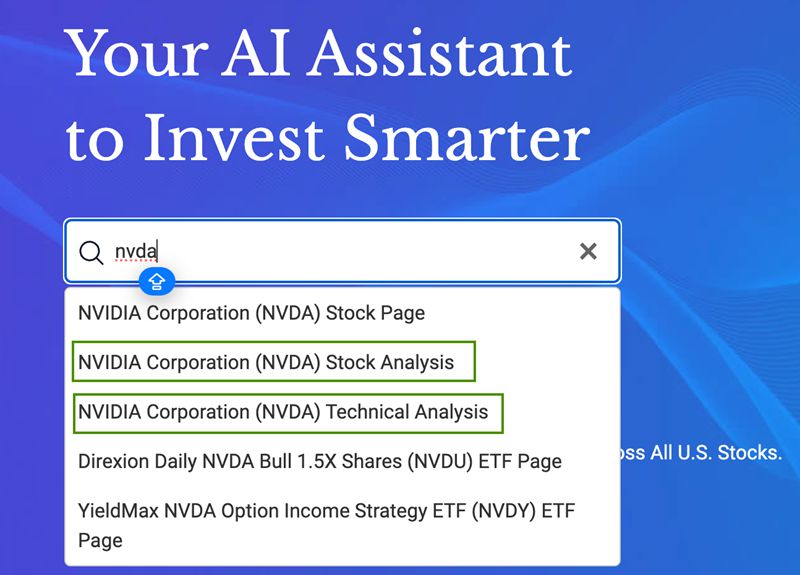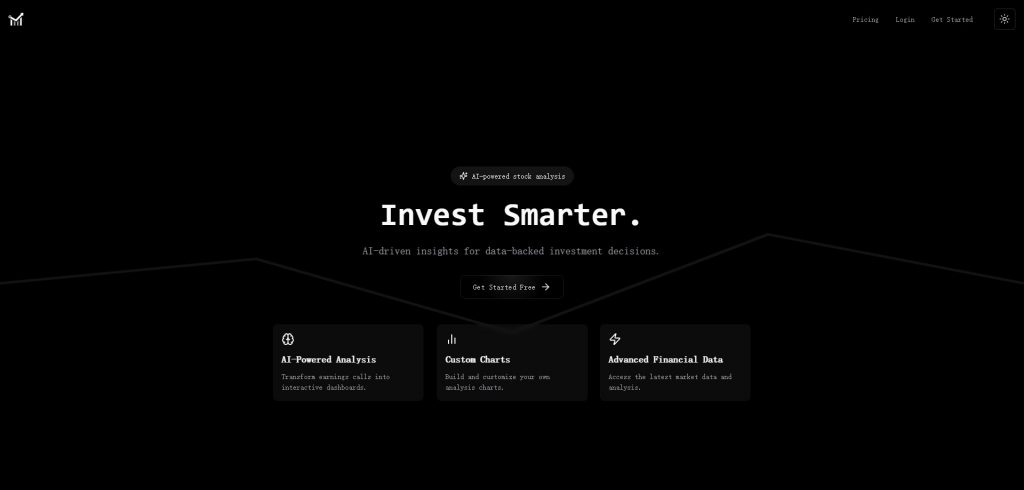20 New Ways For Deciding On copyright Ai Trading Bot Sites
20 New Ways For Deciding On copyright Ai Trading Bot Sites
Blog Article
Top 10 Tips To Evaluate The Strategy Customization Of Ai Trading Platforms
Strategy customization is a key feature of AI trading platforms that predict and analyze stocks, as it allows users to tailor the platform to their specific trading goals and risk tolerance as well as market conditions. A platform that offers a wide range of customization options will improve the performance of your trading. Here are the top 10 strategies for evaluating the customizable options offered by these platforms.
1. Evaluate Pre-Built Strategy Templates
A variety of templates: See whether the platform provides various pre-designed strategies for different trading styles (e.g. day trading, swing trading, long-term investment).
Ease of use: Assess the ease of use required to apply and modify these templates to suit your requirements.
Performance history: See whether you have access to historical data of the performance of pre-built strategies.
2. Examine Customized Strategy Development
Drag-and drop tools: Search for platforms with intuitive drag-and-drop interfaces that allow you to design customized strategies.
Find out about coding options. For more advanced users it is possible to determine if the platform allows custom programming.
Flexibility: You must be able to establish the criteria for entry and exit as well as risk management parameters, and other elements that are crucial to your plan.
3. Check for Backtesting Capabilities
Historical data: Determine whether your platform has enough historical data to test backtesting strategies.
Customizable parameter: Make sure you have the ability to adjust parameters when back-testing (e.g. indicators or timeframes).
Performance metrics: Determine whether the platform provides precise performance metrics like win rates (e.g. Sharpe ratio), drawdown, and other metrics, for strategies that have been tested back.
4. Evaluate Real-Time Strategy Testing
Simulation or paper trading Check that the platform is compatible with paper trading that allow you to evaluate trading strategies in real-time without risking any money.
Live testing: See whether you are able to run strategies live in markets using tiny amounts of capital to assess their performance.
Real-time Adjustments: Check whether you can adjust your settings in real time according to the market conditions.
5. Assess Integration with Technical Indicators
Indicator library - See if a platform provides a comprehensive collection of technical indicators, including moving averages (e.g. RSI), MACD, or RSI.
Custom indicators. You must ensure that you are able to create or use customized indicators as part of your strategy.
Check that the platform permits you to combine several indicators into complex strategies.
6. Check for Risk Management Tools
Stop-loss/take-profit: Ensure the platform allows you to set stop-loss and take-profit levels within your strategies.
Position sizing: Find out if you are able to establish rules for sizing positions (e.g. the amount that is fixed or a percentage of the portfolio) to help manage risk.
Risk-reward ratio: Verify whether the platform allows setting risk-reward ratios for individual strategies or trades.
7. Evaluate Multi-Asset Strategy Support
Asset classes: Ensure the platform supports strategies across multiple asset classes (e.g., ETFs, stocks, options and forex).
Strategies for cross-assets: Determine if you're able to design strategies that combine various asset classes.
Market coverage: Determine if the platform offers the services you require (e.g. US, international or cryptocurrencies).
8. Review Automation, Execution and Execution
Automated trading: Make sure the platform allows automated execution of strategies that follow predetermined rules.
Order types: Determine the platform that supports various kinds of orders (e.g. market, limit, and stop) to execute the strategy.
Latency - Verify the platform's ability to execute trades promptly and efficiently, particularly when employing high-frequency strategies.
9. Look for strategies optimization tools
Optimization of parameters - Make sure that the platform has tools to optimize your strategy's parameters.
Integration of machine learning: Find out whether the platform incorporates machine learning to improve and improve strategies.
Scenario Analysis: Determine whether the platform allows testing strategies in various markets (e.g. bull or bear and volatile).
Review User Feedback
User feedback: Use reviews from users to assess the effectiveness of the platform in determining customizing strategies.
Forums for communities: Find out if there's an active community of users who are willing to share their strategies and ideas.
Support resources. Be sure to check for tutorials or webinars to assist you in developing and optimizing your strategies.
Bonus Tips
Trial period: Use the free trial to test strategy customization capabilities.
Scalability: Make sure your platform can handle complex strategies that evolve when you trade.
Customer support: Find out whether you can seek assistance with strategy-related questions or issues.
Follow these tips to assess the AI platform's stock prediction/analyzing capabilities and capability to modify strategies. By doing so you can be sure that you select a platform that matches your needs for trading and enables you to create and improve your own strategies. A platform that has flexible options for customization can allow you to adjust to changing market conditions and boost your trading performance. Take a look at the recommended best ai trading software for more examples including chart ai for trading, best ai for trading, trader ai app, ai stock price prediction, ai trading tools, chart analysis ai, ai investment app, ai stocks, ai investment platform, invest ai and more.
Top 10 Tips For Evaluating The Educational Resources Of Ai Stock Predicting/Analysing Trading Platforms
To better understand how to utilize, interpret and make informed trade decisions Users must evaluate the educational tools made available by AI-driven prediction systems and trading platforms. Here are the top 10 ways to assess the quality and usefulness of these sources:
1. Comprehensive Tutorials and Guidelines
TIP: Make sure the platform has tutorials that walk you through every step, or user guides for advanced and novice users.
Why? Users are able to navigate the platform more easily by following clear directions.
2. Webinars & Video Demos
Find videos, webinars and live training sessions.
Why? Interactive and visual content makes complex concepts easier for you to understand.
3. Glossary
Tips. Make sure your platform comes with a glossary that clarifies key AIand financial terms.
The reason: This will help all users, but especially novices to the platform be able to comprehend the terminology.
4. Case Studies: Real-World Examples
Tip. Verify that the platform provides case studies that show how AI models could be applied to real-world scenarios.
Why: The platform's applications and efficiency are demonstrated through concrete examples.
5. Interactive Learning Tools
Explore interactive tools such as tests, sandboxes and simulators.
Why? Interactive tools allows users to try and practice their knowledge without risking money.
6. Regularly updated content
Make sure that the educational materials are regularly updated to reflect changing regulatory or market trends or new features, and/or changes.
Reason: Misleading or out of date information can cause misunderstandings, and even incorrect usage of a platform.
7. Community Forums Assistance
Search for forums that are active in communities or support groups that enable users to share ideas and insights.
What's the reason? Peer assistance, expert advice and help from peers can enhance learning.
8. Accreditation and Certification Programs
Check whether the platform has certification programs and accredited courses.
The reason is that formal recognition of the learning process can motivate them to learn more.
9. Accessibility and User-Friendliness
Tip. Evaluate whether the educational resources you're making use of are readily available.
Why: Easy access ensures that users can learn at their own pace and convenience.
10. Feedback Mechanisms for Educational Content
Tips: Find out if the platform allows users to provide feedback on the educational materials.
What is the reason: Feedback from users aids in improving the relevancy and the quality of the content.
Bonus Tip: Learn in different formats
The platform should offer a wide range of learning options (e.g. audio, video and texts) to meet the requirements of all learners.
By evaluating these aspects carefully and carefully, you will be able to determine whether the AI technology for stock trading and forecasting provides the best educational resources that will enable you to make the most of their capabilities and make educated decisions. Check out the top trader ai review tips for website advice including best stock advisor, best ai trading software, stocks ai, ai trading software, incite, best ai trading software, best ai etf, ai trading software, trade ai, ai for investing and more.